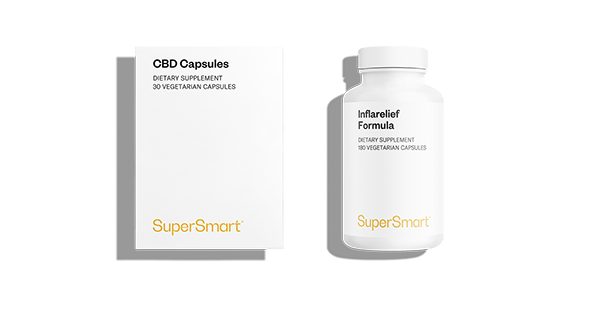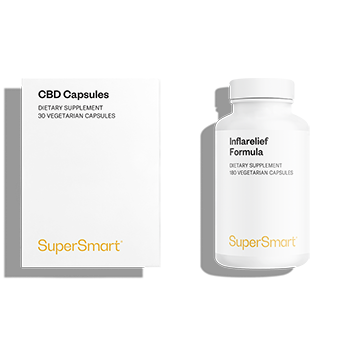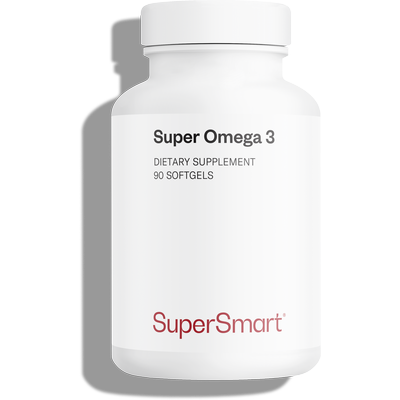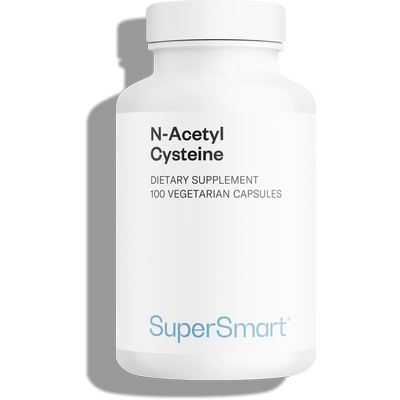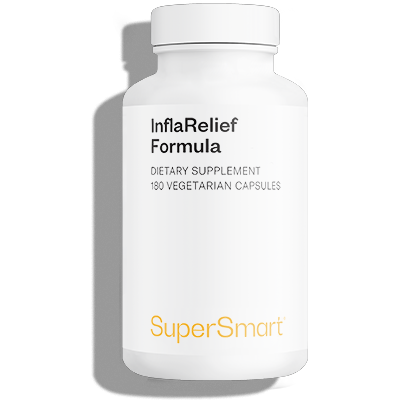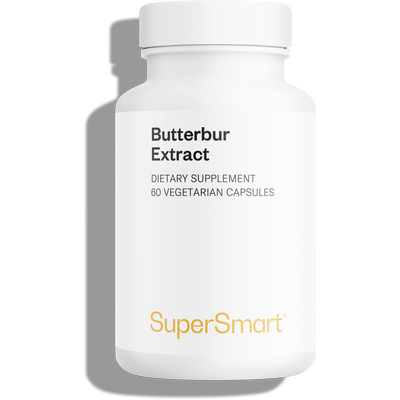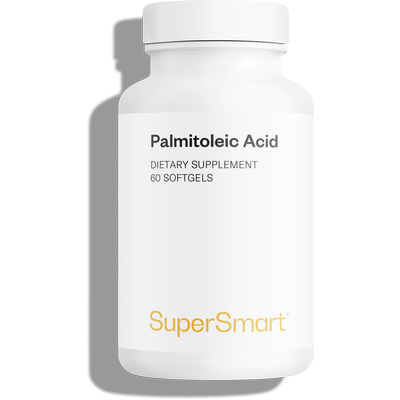In stock
CBD 25mg + Inflarelief Formula
Complete your selection
What is in CBD 25mg + Inflarelief Formula
Any questions?
Our team of nutrition experts and scientists has the answers.
Cannabidiol (CBD) is a phytocannabinoid molecule found in hemp ((Cannabis sativa) alongside the well-known psychotropic substance tetrahydrocannabinol (THC). However, unlike THC, CBD does not have any narcotic properties.
It is a natural compound which mimics the action of endocannabinoid messengers produced by the body. Like them, it is able to bind to specific receptors (CB1 and CB2) located on external cell membranes, and trigger various cellular responses such as restricting synaptic transmission, relieving pain and reducing spontaneous locomotion (1). Just like endogenous cannabinoids, CBD thus inhibits the transmission of small-diameter nociceptive fibres (which are involved in the pain process) and reduces the release of neurotransmitters like substance P, responsible for transmitting pain.
Unlike THC, which has a strong affinity for CB1 receptors, CBD binds more to CB2 receptors. These are found on the surface of cells of the central nervous system and in particular in immune system tissues where they are involved in modulating memory, emotions and pain (chronic, inflammatory or neuropathic) (2-3).
This depends on several factors:
- The concentration of the CBD.
- A person’s weight.
- Individual biological factors.
- The severity of the initial problem or symptoms.
For someone with a bodyweight of 70kg, and where the product is standardised to 17% CBD, the optimal dose would be 25mg, although this can be gradually increased to 50mg depending on the results obtained (though this higher dose should not be exceeded). CBD can also be vaporised but the most stable and consistent mode of administration is expertly-dosed, oral capsules.
“Over a lifetime, our body’s physiology changes, as does the number and distribution of receptors in the endocannabinoid system which are directly responsible for interactions with CBD. The optimal dose will therefore change depending on the individual and age“Nick Jikomes, PhD, neuro-physician.
Unlike the drug cannabis which usually contains around 15% THC, the form used in this product has none. It therefore has no psychotropic effects and has an excellent safety profile in humans.
Once ingested, CBD is rapidly distributed around the body. It is lipophilic and thus quickly crosses the blood-brain barrier to reach brain tissues. It has no effect on heart rate, blood pressure or body temperature. CBD’s half-life is around 9 hours after which it is excreted in a metabolised form in urine.
To date, no public health problem has been associated with the nutritional use of CBD.
This product’s capsules are composed of HPMC (hydroxypropyl methylcellulose), a plant substance derived from cellulose. HPMC is widely used for medicines and dietary supplements. It contains no animal ingredients, is recognised as safe by health authorities and is considered more sustainable than synthetic alternatives.
These simple measures can help reduce chronic inflammation:
- take regular exercise. Physical activity stimulates the release of interleukin-6 (IL-6) and interleukin-10 (IL-10), two cytokines which naturally lower inflammation levels (14). The effect is even more pronounced when the exercise is prolonged;
- lose weight. Adipose cells affect fatty tissue macrophages by maintaining an inflammatory state (15). If you are overweight, try to lose a few kilos by making appropriate diet and lifestyle changes;
- adopt an anti-inflammatory diet. Reduce your consumption of sugar and prioritise foods with a low glycaemic index (GI) (such as pulses and whole grains) (16). Eat plenty of highly-coloured fruits and vegetables containing antioxidants. At the same time, increase your omega-3 intake (with oily fish, rapeseed oil, walnuts, flax and chia seeds ...) to redress the balance with omega-6, an excess of which becomes pro-inflammatory (17);
- avoid stress as much as possible. Increased psychosocial stress can raise CRP levels (18). To reduce inflammation, indulge in some relaxation exercises, yoga, meditation or any activity you find relaxing.
To help fight inflammation, the supplement InflaRelief can be combined with various other products, depending on your particular problem:
- for joint discomfort, consider Joint Support Formula enriched with bamboo, a plant that contains silica which reduces joint and bone discomfort (19) ;
This product’s capsules are composed of HPMC (hydroxypropyl methylcellulose), a plant substance derived from cellulose. HPMC is widely used for medicines and dietary supplements. It contains no animal ingredients, is recognised as safe by health authorities and is considered more sustainable than synthetic alternatives.
Need help?
You may also like

